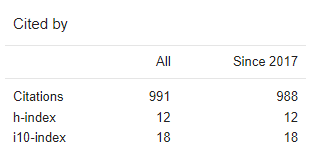History and Application of Piercing the Corporate Veil Doctrine: A Comparison Study between the United Kingdom and Indonesia
Downloads
Separate legal entity doctrine is a foundation in corporation law, and courts have generally resisted deviations from it, save in specific instances involving doctrine of piercing of the corporate veil (PCV). PCV doctrine permits a party to circumvent the separate legal personality and hold the company's "controller" liable. This essay will explain the evolution and future of PCV in UK and Indonesian law. Research methods that will be used are normative and comparative law methods. UK cases have developed PCV doctrine, such as the Rossendale case, which the court argues that not every case requires the doctrine. While Indonesia’s law system implicitly regulated the doctrine under Art. 3 (2) Law Number 40 of 2007 and no major cases. For the future of the doctrine, the UK judges maintained a firm commitment to limited liability and separate legal personality, which means the doctrine’s future looks uncertain. While in Indonesia, there is a lack of highlighting and balancing the separate legal entity with piercing the corporate veil.
Books
Abdulkadir Muhammad, Hukum dan Penelitian Hukum (Citra Aditya Bakti, 2004).
Ben Pettet, Company Law (Pearson Education Limited 2005).
Charles Wild and Stuart Weinstein, Smith and Keenan’s Company Law (Pearson Education Limited, 2019).
Paul L. Davies, Sarah Worthington, and Christopher Hare, Gower: Principles of Modern Company Law (Sweet & Maxwell 2021).
Peter Mahmud Marzuki, Penelitian Hukum (Kencana Prenada Media 2016).
Articles
Adolf A. Berle Jr, ‘The Theory of Enterprise Entity’ (1947) 47 (3) Columbia Law Review.
Brenda Hannigan, ‘Wedded to Salomon: Evasion, Concealment and Confusion on Piercing the Veil of the One-Man Company’ (2013) 50 Irish Jurist.
Cheng Han Tan, Jiangyu Wang and Christian Hofmann, ‘Piercing the Corporate Veil: Historical, Theoretical and Comparative Perspectives’ (2019) 16 Berkeley Business Law Journal.
Edwin Mujih, ‘Piercing the Corporate Veil as a Remedy of Last Resort After Prest v Petrodel Resources Ltd: Inching Towards Abolition?’ (2016) 37 Company Lawyer.
Hutchinson Terry, 'Critique and comment developing legal research skills: Expanding the paradigm' (2008) 32 Melbourne University Law Review.
Mohamed F. Khimji and Christopher C. Nicholls, ‘Piercing the Corporate Veil Reframed as Evasion and Concealment’ (2015) 48 UBC Law Review.
Muhammad Zubair Abbasi, ‘Legal Analysis of Agency Theory: an Inquiry into the nature of Corporation (2009)51 International Journal of Law and Management.
Nupur Upadhyay, ‘Piercing the Corporate Veil: An Analysis of Lord Sumption’s Attempt to Avail a Troubled Doctrine’ (2015) 21 Auckland University Law Review.
Pui Ting Florence Yiu, ‘Piercing the Corporate Veil Post-Prest’ (2024) Law and Financial Markets Review.
Stefan H.C. Lo, ‘Nature of Corporate Veil-Piercing and Revitalization of the Evasion Principle’ (2023) 139 Law Quarterly Review.
Sulistiowati dan Veri Antoni, ‘Konsistensi Penerapan Doktrin Piercing The Corporate Veil Pada Perseroan Terbatas Di Indonesia’ (2013) 2 Yustisia.
Cases
Gilford Motor Company, Limited v. Horne [1933] 1 Ch 935.
Hurstwood Properties (A) Ltd v. Rossendale BC [2022] AC 690.
Prest v. Petrodel Resources Ltd. [2013] 2 AC 415.
PT Bank Pembangunan Asia v. PT Djaja Tunggal No.136/Pdt.G/1987/PN.Bgr and No. 431/P/1989/PT. Bdg.
Salomon v. A Salomon & Co Ltd. [1897] AC 22.
Woolfson v. Strathclyde Regional Council (1978) SC HL 90.
VTB Capital plc v. Nutritek International Corp [2013] 2 AC 337.
Regulations
Law Number 40 of 2007 concerning Limited Liability Companies.
Copyright (c) 2025 Muhammad Aqil Kamaluddin

This work is licensed under a Creative Commons Attribution 4.0 International License.
Jurist-Diction (P-ISSN 2721-8392, E-ISSN 2655-8297), published by Universitas Airlangga, is licensed under the Creative Commons Attribution 4.0 International License (CC BY 4.0).
This license permits users to:
- Share – copy and redistribute the material in any medium or format;
- Adapt – remix, transform, and build upon the material for any purpose, including commercial use.
These freedoms are granted under the following conditions:
Attribution – You must provide appropriate credit, include a link to the license, and indicate if any changes were made. This may be done in any reasonable manner, but not in a way that suggests the licensor endorses you or your use.
No additional restrictions – You may not apply legal terms or technological measures that restrict others from exercising the rights granted under the license.
Note: As of Volume 5, No. 1 (2022), Jurist-Diction has adopted the Creative Commons Attribution 4.0 International License (CC BY 4.0), replacing its previous license (CC BY-NC-SA).


















